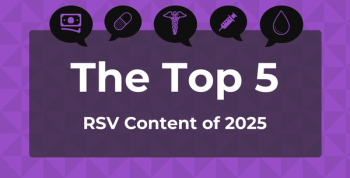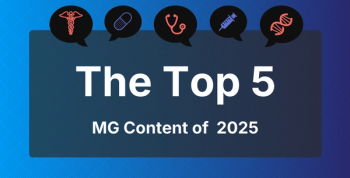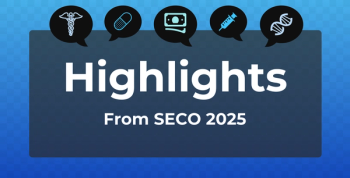
Black Youths Overlabeled High Risk in Mental Health Emergencies
Key Takeaways
- Black youths are disproportionately labeled with high aggression risk flags, despite similar evaluation tool responses, indicating racial bias in healthcare settings.
- Structural racism and bias contribute to differential treatment, with Black adolescents experiencing an 80% increase in suicide attempts from 1991 to 2019.
Despite similar scores on an aggression risk evaluation tool in a pediatric emergency department, Black youths were significantly more likely to be labeled with a high aggression risk behavioral health flag in their electronic health records compared with White youths.
Black youths were labeled with a high aggression risk behavioral health flag at higher rates than others, despite similar responses to an aggression risk evaluation tool, according to a study published in JAMA Network Open.1
Mental health conditions affect an estimated 1 in 5 youths, with pediatric emergency department visits for suicide attempts, suicidal ideation, and self-injury almost tripling since 2016. Children from minoritized racial and ethnic groups are less likely to have access to mental health resources than non-Hispanic White children. This remains significant because interpersonal, institutional, and structural racism subjects Black children to factors that negatively impact their health care.
Structural racism and bias are major factors that link differential treatment of Black youths in the health care system. From 1991 to 2019, Black adolescents experienced the highest increase among any racial or ethnic group in prevalence of suicide attempts, a rise of almost 80%.2 Additionally, Black youths face unique challenges that impact their mental health, such as their behavior being punished more frequently compared with White children, the perception that Black teens are less innocent, and racism that negatively impacts mental health.
About three-quarters of emergency department nurses and one-quarter of emergency department physicians have experienced physical assault at work.1 As such, electronic health record (EHR)–embedded behavioral health flags often alert emergency department staff to the potential risk of violent or harmful encounters, but the study authors noted that their use is not evidence based and they may be a mechanism for racial bias.
In these settings, Black children with mental health conditions receive harsher treatments and are more likely to be physically or chemically restrained compared with their White peers. Researchers conducted a cross-sectional study within a single-center pediatric emergency department to investigate racial and ethnic differences in the use of an aggression risk evaluation tool and the labeling of a high aggression risk behavioral health flag in the EHR.
There were 5121 visits by patients 21 years or younger for mental health concerns from 2020 to 2022, which represented 3761 unique patients. Girls and women were the majority (62.5%), and there was a mean age of 13.8 years old. Black patients made up the majority (59.8%), followed by Hispanic (17.4%), White (15.2%), and other races (7.6%).
Most visits with a psychiatry social work evaluation used an aggression risk evaluation tool (80.4%). A low aggression risk behavioral health flag was used for most of the visits with a completed evaluation (7.04%). Among patients for whom the aggression risk evaluation tool was used, 15.2% were labeled with a high aggression risk behavioral health flag.
More Black youths had higher odds of receiving a high aggression risk behavioral health flag compared with White youths (19.8% vs 9.8%, respectively; adjusted OR [AOR], 1.71; 95% CI, 1.24-2.35). Hispanic youths had lower odds of receiving a high aggression risk behavioral health flag than White youths (4.7% vs 9.8%; AOR, 0.35; 95% CI, 0.22-0.56).
An estimated one-third of patients (35.6%) responded “yes” to a history of violent behavior. Among those who had a history of violent behavior but no other aggressive behaviors documented, Black youths had higher odds of receiving a high aggression risk behavioral health flag in their EHR compared with White youths (32.4% vs 10.7%; OR, 4.00; 95% CI, 1.16-13.69).
Previous research has found frequent use of stigmatized language and negative descriptors of Black patients compared with White patients.3 One study found that Black patients were described in EHRs with one or more negative descriptors like “agitated,” “angry,” “aggressive,” and “not compliant” more than twice as often. Another study found stigmatizing language like “nonadherence,” “belligerent,” and “abuser” more often in Black patient records compared with White patients. Overall, data linked Black race with 5.6 additional negative notes per 100 patients relative to White race.
The study may be limited in that staff documented race and ethnicity based on perception rather than self-report.1 Researchers could not determine whether other clinical factors aside from the screening questions played a role in the assignment of the aggression flags. Results are based on a single pediatric emergency department in an urban area and may not generalize to all pediatric emergency departments.
“More work is needed to identify the reasons for this difference and to better understand the benefits and unintended consequences of behavioral health flags on patient care,” the study authors concluded.
References
1. Foltz D, Badolato GM, Schultz TR, et al. Behavioral health flag use by race and ethnicity in a pediatric emergency department. JAMA Netw Open. 2025;8(5):e259502. doi:10.1001/jamanetworkopen.2025.9502
2. Black youth face unique mental health challenges. Fraser. January 30, 2025. Accessed May 8, 2025.
3. D’Arrigo T. Negative language in medical records more common for black patients. Psychiatric News. 2022;57(10). doi:10.1176/appi.pn.2022.10.10.17
Newsletter
Stay ahead of policy, cost, and value—subscribe to AJMC for expert insights at the intersection of clinical care and health economics.







































